When thinking of rest during the workday, you may picture someone sitting still on their phone or taking a quick power nap in the car, but rest and recovery looks very different when it comes to optimizing focus and performance. Taking a load off may seem like the best way to stop a midday crash but the truth is: sitting still burns your cognitive energy.
The natural energy booster: movement.
In a study testing the impact of microbreaks on workers, researchers found that for workers who remained seated throughout the workday, perceived energy level peaked immediately after breakfast and then declined through the day back to the baseline value. For those who engaged in a single bout of exercise, participants reported higher energy levels than those reported by sedentary workers and those taking microbreaks. However, for employees taking microbreaks, their perceived energy level was greater compared to both sedentary workers and workers who engaged in pre-work exercise. When measuring energy level immediately after their last microbreak, participants reported a higher energy level than sedentary employees and even higher than those who exercised once before work. Thus, microbreaks are the best method to not only preserve, but boost energy levels throughout the day compared to sitting and pre-work exercise.8
Sitting still leads to higher levels of fatigue, lower levels of energy and cognitive function, and less time spent focusing. But when you break up that time spent sitting with movement and exert a bit of physical energy, something amazing happens: you actually GAIN energy.
While time management is important, time is a fixed state that can be organized into to-do lists and schedules, but what happens when your energy levels are depleted? Energy management allows you to create a schedule that works with both your time, and your mind and body.
“Today, I believe we are facing a ‘human energy crisis’ that is taking a toll on employees. From the warehouse, to the sales floor, to the office, workers are languishing, feeling burnt out, and exhibiting emotional detachment. These feelings demonstrate that people everywhere are struggling to maintain balance in their work and personal lives."4 Kathleen Hogan, Microsoft Chief People Officer
What gives you energy?
Understanding your mind and body to determine how to recover effectively.
Manage your energy, not your time; an adage many have heard but few know how to do correctly. You can’t bring the same amount of energy all day- so you must plan for your energy to dip, not remain constant. It can be easy to overlook burnout when there is a looming deadline, but allowing just a few minutes of recovery can completely change the trajectory of your day.
Managing your energy requires understanding the different types of energy you have and how to recover each of them: physical energy, emotional energy, mental energy, and spiritual energy.7
How to have more energy: physical energy
Depleted physical energy may feel like tense shoulders, an aching back, drooping eyelids, or a midday yawn. Physical energy is the most fundamental form, with most people feeling a dip between 3 and 4 pm but this can vary depending on your previous day’s activities.
The top ways to recover your physical energy:
- Breathe: deep breathing regularly, breathing out more than you are breathing in, has a huge impact on physical and emotional energy. Deep breathing can amplify blood oxygen levels,1 which is necessary for cellular respiration (the process by which cells produce energy), leading to improved physical and mental energy.
- Exercise: While a morning walk may be a great boost of energy to start your day, it is important to keep moving throughout the day to keep energy levels from taking a hit. Microbreaks throughout the day are associated with superior cognitive performance, mood, and less fatigue compared to both uninterrupted sitting and 30 minutes of exercise.2
- Get good sleep: Getting a full 7-8 hours of sleep can help prepare you for the next day of work. Taking movement microbreaks throughout the day have been shown to improve both quality and quantity of sleep.3
- Eat and drink: Fueling your body with protein and whole foods, as well as making sure you stay hydrated, can keep your body energized and performing well.
How to have more energy: mental energy
Depleted mental energy may feel like getting easily distracted, procrastinating, or shifting to easier tasks. Pushing past your mental bandwidth each day can lead to burnout and detachment, while working with your mental energy through recovery techniques can expand your energy over time.
The top ways to recover your mental energy:
- Mentally prepare for long or complex tasks: Preparing yourself to learn before long trainings or to focus before complex tasks can boost your energy and reduce mental strain. Moving for two minutes improves attention, concentration, learning and memory functions for up to two hours after the break5. Moving also stimulates nerve cell growth in the hippocampus, the center of learning and memory.6
- Change mental channels: Your mental energy may take a dip when you focus on one task for too long, even simple tasks. Switching to tasks that require different types of mental energy or different amounts can help you perform at your best.
- Practice positive self-talk: It can be defeating when we need just a bit more mental energy that we don’t have. You can recover from this by reflecting on what you accomplished on the task thus far, what you have done well recently, or thinking about how your strengths have elevated the task.
How to have more energy: emotional energy
Depleted emotional energy may feel like avoiding others, feeling easily angry or frustrated, or feeling stressed.
Stress at work can severely deplete your emotional energy, but those taking microbreaks experienced significantly lower job-related stress compared to their counterparts who maintained their regular sitting habits.2 Hard conversations with customers, bosses, or colleagues, can also have a negative impact on emotional energy. Microbreaks can help by reducing the strain of these negative emotions. People are in a better mood on days when they take movement breaks, reporting more positive emotions, fewer negative feelings and more energy, and an average 25% reduction in fatigue.9
The top ways to recover your emotional energy:
- Do something you ACTUALLY enjoy: Engaging in activities that bring joy can help replenish emotional energy that may have been diminished through a hard conversation or a busy day.
- Do something relaxing: When your mind is overwhelmed and overdone with intense emotions, take a bit of time to fully relax your mind and body.
How to have more energy: spiritual energy
Depleted spiritual energy may feel like a lack of passion for your work or life, not being able to commit to projects or tasks, or acting out of character. Finding ways to connect with your community, the natural world, and your sense of self can help recover drained spiritual energy.
The top ways to recover your spiritual energy:
- Focus your attention to your thoughts and/or body: paced breathing exercises can both focus attention and regulate the nervous system.10
- Spend time in nature: connecting with nature can help us focus on our thoughts, the world around us, and create a feeling of greater purpose or appreciation.
- Service others: Helping others can boost a sense of community and belongingness, helping you feel more passionate about your surroundings and connected to your work.
The most important step in energy management is learning about yourself! Spend a week tracking how each form of energy feels every hour and then spend the next week experimenting with what forms of recovery works best for you.
How to get more energy: for your team
With 48% of employees and 53% of managers reporting that they’re burned out at work, it is clear we are suffering from an energy crisis.4 Forcing employees to work through their burnout, push through extreme stress, and continue to work long hours on complex tasks only exacerbates the problem. What employees need are breaks; the space and encouragement to evaluate their energy levels and time to recover them effectively. Pizza parties, company swag, and $10 gift cards may seem like a quick and easy way to address energy issues, they can actually make employees feel more unheard.
“To address the human energy crisis, managers must demonstrate that they are listening and taking action.”4 Show, don’t just tell employees that breaks are an essential part of the workday by modeling the behavior yourself and gifting microbreaks to your team. To change your team, you must change your culture around breaks.
“For leaders, it’s important to model taking time off. Leaders can do this by sharing stories of their time off or by talking about the flexibility they provide themselves. Doing so lets others know that they have permission to take their foot off the gas too.”4 Kathleen Hogan, Microsoft Chief People Officer
- Toussaint, Loren, Nguyen, Quang Anh, Roettger, Claire, Dixon, Kiara, Offenbächer, Martin, Kohls, Niko, Hirsch, Jameson, Sirois, Fuschia, Effectiveness of Progressive Muscle Relaxation, Deep Breathing, and Guided Imagery in Promoting Psychological and Physiological States of Relaxation, Evidence-Based Complementary and Alternative Medicine, 2021, 5924040, 8 pages, 2021. https://doi.org/10.1155/2021/5924040
- Mainsbridge, C. P., Cooley, D., Dawkins, S., de Salas, K., Tong, J., Schmidt, M. W., & Pedersen, S. J. (2020). Taking a Stand for Office-Based Workers' Mental Health: The Return of the Microbreak. Frontiers in public health, 8, 215. https://doi.org/10.3389/fpubh.2020.00215
- Arippa, F., Nguyen, A., Pau, M., & Harris-Adamson, C. (2023). Movement Behavior and Health Outcomes among Sedentary Adults: A Cross-Sectional Study. International Journal of Environmental Research & Public Health, 20(5), 4668. https://doi.org/10.3390/ijerph20054668
- Hogan, K. (2023, March 30). Microsoft Chief People Officer: We are experiencing a global human energy crisis. Fast Company. https://www.fastcompany.com/90872995/microsoft-chief-people-officer-we-are-experiencing-a-global-human-energy-crisis
- Blomstrand, P., & Engvall, J. (2020). Effects of a single exercise workout on memory and learning functions in young adults—A systematic review. Translational Sports Medicine, 3(5), 437–446. https://doi.org/10.1002/tsm2.19
- Miller, G. (2022, October 18). How does breathing affect your brain? Smithsonian Magazine. https://www.smithsonianmag.com/science-nature/how-does-breathing-affect-your-brain-180980950/
- Verbal to Visual. (2022, November 16). The energy cycle your body needs [Video]. YouTube. https://www.youtube.com/watch?v=Lsf166_Rd6M
Based on the book by:
Loehr, J., & Schwartz, T. (2003). The power of full engagement: Managing energy, not time, is the key to high performance and personal renewal. Free Press. - Bergouignan, A., Legget, K.T., De Jong, N. et al. Effect of frequent interruptions of prolonged sitting on self-perceived levels of energy, mood, food cravings and cognitive function. Int J Behav Nutr Phys Act 13, 113 (2016). https://doi.org/10.1186/s12966-016-0437-z
- Zomorodi, M., & Diaz, K. (2023, November 13). Sitting down all day is killing us: The cure is surprisingly simple—and difficult. Los Angeles Times. https://www.latimes.com/opinion/story/2023-11-07/sitting-sedentary-screen-device-work-health-diabetes-hypertension-exercise-fitness-npr
- Bullock, B. G. (2019, October 31). What focusing on the breath does to your brain. Greater Good Magazine. https://greatergood.berkeley.edu/article/item/what_focusing_on_the_breath_does_to_your_brain
Breakthru in the World
Collaborations, Community, Partners and Press
Graham & Walker Portfolio Founder Feature: Melissa Painter, Breakthru: Melissa shares how Breakthru came to be and why movement is necessary throughout the day for cognitive and emotional functioning, collaboration, and creativity. https://grahamwalker.com/blog/gw-portfolio-founder-feature-melissa-painter-breakthru/
Breakthru has joined Walmart's health and wellbeing initiatives, offering 2-minute immersive movement and breathing microbreaks to their US team. https://one.walmart.com/content/usone/en_us/me/health/health-programs/breakthru.html
PODCAST: Portal to the Next Stage, episode: The Power of Microbreaks: Embodied Intelligence for a Healthier Workplace with Melissa Painter
A conversation with Melissa Painter and Kiira Benz about how microbreaks and embodied intelligence contribute to a healthier workplace culture.
PODCAST: Hope @Work, episode: Two-Minute Resets for Workplace Wellness
How Breakthru is transforming the workplace with 2-min movement microbreaks that boost creativity, reduce burnout, and redefine productivity.
The Music Center presents Breakthru: Move Your Mood and Breathe L.A.
Breakthru partners with The Music Center to present twice daily movement and breathing-based microbreaks in the heart of Downtown L.A.
An interview with Mark Morris and Melissa Painter: dance for all, movement in the workplace and through life, and giving employees the tools they need to feel good https://www.dance-enthusiast.com/features/the-dance-enthusiast-asks/view/Mark-Morris-Melissa-Painter-Breakthru-
Breakthru partners with Mark Morris Dance Group to bring the joy of movement to the workday and make dance more accessible for all https://www.danceinforma.com/2024/10/02/dancing-at-your-desk-mark-morris-dance-group-and-breakthru-create-dance-breaks-for-your-workday/
Microsoft for Startups Blog: Breakthru founder Melissa Painter: Expanding well-being in a distributed world with Microsoft Teams
Microsoft’s look into Melissa Painter and her app, Breakthru: the immersive well-being app that’s helping remote teams feel more centered, energized, and connected to their minds and bodies.
Analytics India Magazine: Prioritise Your Well-Being with Breakthru.me: The Immersive and Interactive Wellness Experience Designed for Everyone
Learn how Breakthru helps you take a quick break from your daily routine to get moving, without the need for any special equipment or gear.
Breakthru partners with the NHS to improve healthcare worker’s mental and physical health through microbreaks. In just under a year over, Breakthru is being used in over 85 percent of the NHS Trust organizations—and growing.
How Microsoft Teams helped the Breakthru app bring wellbeing to 45,000 organizations
Breakthru utilizes Microsoft Teams to reach employees where they are already working to help them create a microbreak habit that leads to improved motivation, focus, cognitive performance, and physical and mental wellness.
Find out how Breakthru can work for your team
Fill in your details to request a meeting oremail us directly at info@breakthru.me for more information.
Breakthru has group functions (meeting and training integrations, setting Team and Company challenges, how managers use the gifting functions, etc), and launch support (comms materials, group onboarding workshops, etc) included in org wide deals.
Breakthru adds new breaks monthly to its large system of breaks, so the content is always growing throughout the year.
Movement based microbreaks protect against the negative health impact of sedentary behavior, prevent repetitive stress injury, and foster proprioception (body awareness).
For support with Breakthru, or questions,
please contact us at: info@breakthru.me
Join the
45,000+
corporations, educational
communities, and non-profits
worldwide using Breakthru.















